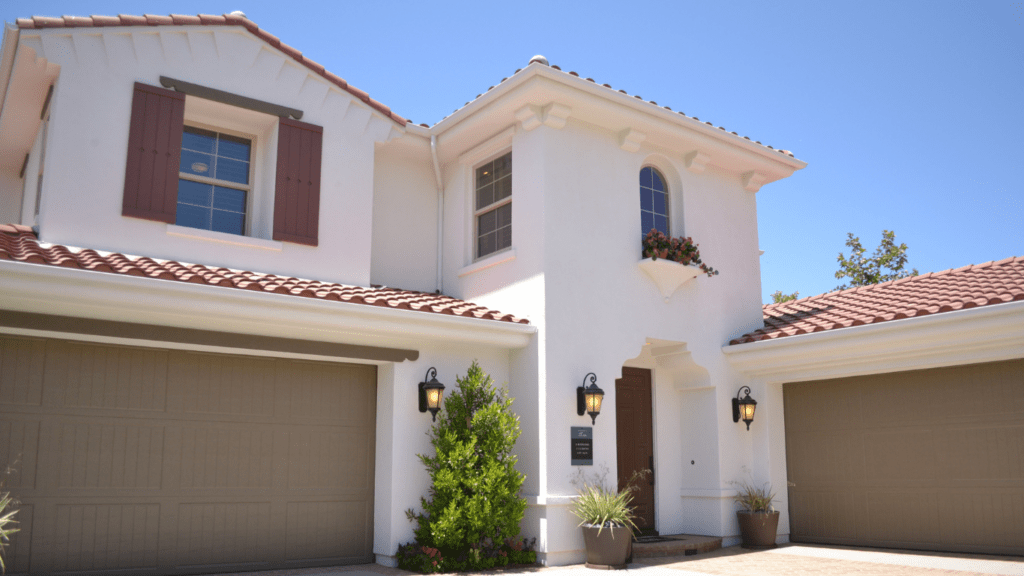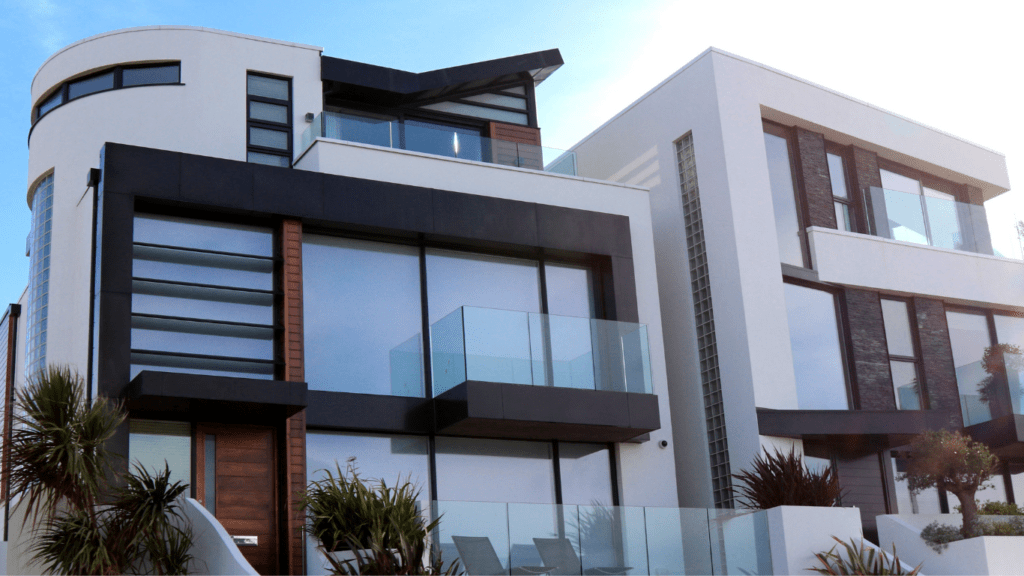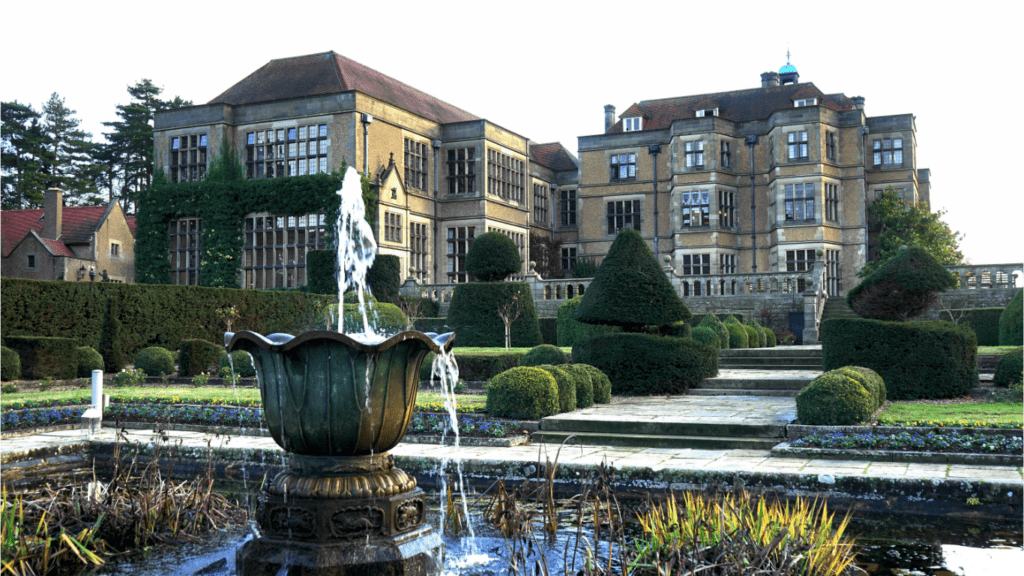Overview Of Mixing Materials In Home Exteriors
Combining various materials in home exteriors enhances aesthetic appeal and provides functional benefits. Mixing materials like:
- brick
- wood
- metal
- stucco
can create visually stimulating facades. Brick offers durability, while wood adds warmth. Metal elements contribute modernity, and stucco provides smooth finishes.
Mixing materials also allows for customization. Homeowners can choose combinations that reflect personal taste and architectural style. For instance, pairing rustic wood with sleek metal can balance traditional and contemporary elements.
Energy efficiency and sustainability are additional benefits. Using local materials reduces transportation costs and environmental impact. Incorporating materials like insulated metal panels improves energy efficiency, reducing heating and cooling costs.
Lastly, maintenance considerations are crucial. Complementary materials can simplify upkeep. For example, combining easy-to-clean metal panels with low-maintenance brick reduces overall maintenance efforts.
Popular Material Combinations
Exploring popular material combinations reveals how distinct textures and finishes can harmonize for a striking exterior.
Wood And Stone
Pairing wood with stone creates a balanced, earthy aesthetic. Wood offers warmth and natural appeal, while stone adds ruggedness. For example, cedar siding complements granite accents. This combination suits rustic and contemporary styles, adding organic textures and visual interest. Natural wood, when sealed properly, withstands weather conditions, and stone provides durability.
Brick And Metal
Combining brick with metal results in a modern-industrial look. Brick delivers timeless charm and durability, contrasting beautifully with sleek metal. Think of a red brick facade with steel window frames or a galvanized metal roof. This combination fits urban and modern homes, providing both strength and a unique visual hiscontrast. Brick’s insulation properties, paired with metal’s resilience, enhance energy efficiency.
Stucco And Glass
Mixing stucco with glass creates a clean, contemporary facade. Stucco provides a smooth, seamless finish, contrasting with glass’s transparency. An example is stucco walls with large glass panels or doors. This combination allows natural light to flood interiors, blending indoor and outdoor spaces. Stucco’s insulating properties, combined with energy-efficient glass, offer sustainability and aesthetic appeal.
Benefits Of Mixing Materials
Mixing materials in exterior home finishes offers numerous advantages. It’s a practical approach to enhancing both the look and functionality of home exteriors.
Enhanced Aesthetics
Combining several materials boosts a home’s visual appeal. Brick adds timeless charm while wood introduces natural warmth. Pairing metal with stucco creates a sleek, modern look. These diverse textures and colors personalize facades, ensuring a unique and striking appearance.
Improved Durability
Varied materials enhance exterior resilience. Brick withstands harsh weather, metal resists corrosion, and stucco provides a sturdy finish. Using multiple materials ensures that different parts of the exterior are best suited to their respective roles, increasing the overall durability of the home.
Increased Property Value
A well-executed mix of exterior materials can elevate property value. Prospective buyers appreciate the customized, high-quality aesthetic. The combination of visually appealing and durable materials can justify a higher asking price during the resale process, making it a sound investment.
Design Trends In Exterior Home Finishes

Mixing materials in exterior home finishes is at the forefront of modern design, offering limitless possibilities to create unique facades.
- Modern Rustic
Modern rustic design combines traditional charm with contemporary elements. Wood and stone create a cozy yet updated look. Reclaimed wood brings a sense of history, while sleek lines keep the design current. Incorporating large windows enhances natural light and balances the rustic texture with modern transparency. Examples include pairing cedar siding with stone veneers.
- Industrial Chic
Industrial chic offers a minimalist yet edgy aesthetic. Exposing brick and metal accents provides a raw, unfinished look. Using steel or aluminum for cladding contrasts with the warmth of exposed brick, adding depth. Corten steel, known for its weathered appearance, can add character to an industrial-chic facade. Examples include combining rusted metal panels with original brickwork.
- Coastal Blend
The coastal blend embodies the breezy, relaxed vibe of seaside living. Combining stucco and wood draws from traditional Mediterranean styles while adding beachy elements. Painted clapboard siding in soft hues complements white stucco, offering a light, airy feel. Integrating large glass windows maximizes ocean views and natural light. Examples include pairing light-colored stucco with wooden shutters.
These design trends in exterior home finishes allow homeowners to personalize their exteriors, combining traditional and modern elements for distinctive, appealing facades.
Considerations When Mixing Materials
Combining materials in exterior home finishes introduces both opportunities and challenges. Key considerations ensure that the outcome is aesthetically pleasing, durable, and efficient.
Climate And Environmental Factors
Different climates affect material durability and performance. For example, wood may warp in humid conditions while metal can rust in coastal environments. I recommend considering local climate when selecting materials to ensure longevity. In colder climates, brick’s insulation properties assist in maintaining indoor temperatures, while stucco suits drier, warmer regions by providing a smooth, cool facade.
Budget Constraints
Mixing materials can impact costs differently. For example, reclaimed wood or high-end metal panels increase expenses compared to standard brick or stucco. I suggest planning your budget carefully by researching material costs and labor fees. Using a mix of higher-end and cost-effective materials can maintain a balance between aesthetics and affordability.
Maintenance Requirements
Maintenance varies across materials. Wood requires periodic sealing or staining, whereas metal needs rust prevention treatments. Brick and stucco are relatively low maintenance but may require occasional cleaning or repair. Consider easy-to-clean options and those with minimal upkeep to reduce long-term maintenance. Combining low-maintenance materials keeps overall care manageable.
Each consideration ensures that mixing materials results in a balanced and sustainable exterior finish, enhancing your home’s curb appeal and functionality.



 Betsylie Sheetsin – Home Renovation Expert
Betsylie Sheetsin serves as the Home Renovation Expert at Castle Shelf House, specializing in giving practical advice for both small and large-scale home improvements. With years of experience in construction and renovation, Betsylie understands the importance of blending durability with design. Her insights into home renovation projects, along with expert advice on the latest materials and techniques, empower homeowners to tackle even the most ambitious projects confidently.
Betsylie Sheetsin – Home Renovation Expert
Betsylie Sheetsin serves as the Home Renovation Expert at Castle Shelf House, specializing in giving practical advice for both small and large-scale home improvements. With years of experience in construction and renovation, Betsylie understands the importance of blending durability with design. Her insights into home renovation projects, along with expert advice on the latest materials and techniques, empower homeowners to tackle even the most ambitious projects confidently.
